The Greatest Ar
Sawfish Cultural Significance in Asmat #2
If you have read the blog “Sawfish Cultural Significance in Asmat #1: Never-Ending Story,” you are familiar with the name Ar. Ar is one of several local names the Asmat people gave for sawfish. Apart from Ar, we note other names such as Sawot, Sowot, Sawat, Sawat, Juwa, Yu, Bes, On, and Cakar. However, among these names, Ar is a universal name used by almost Asmat people and has a complete story to tell.
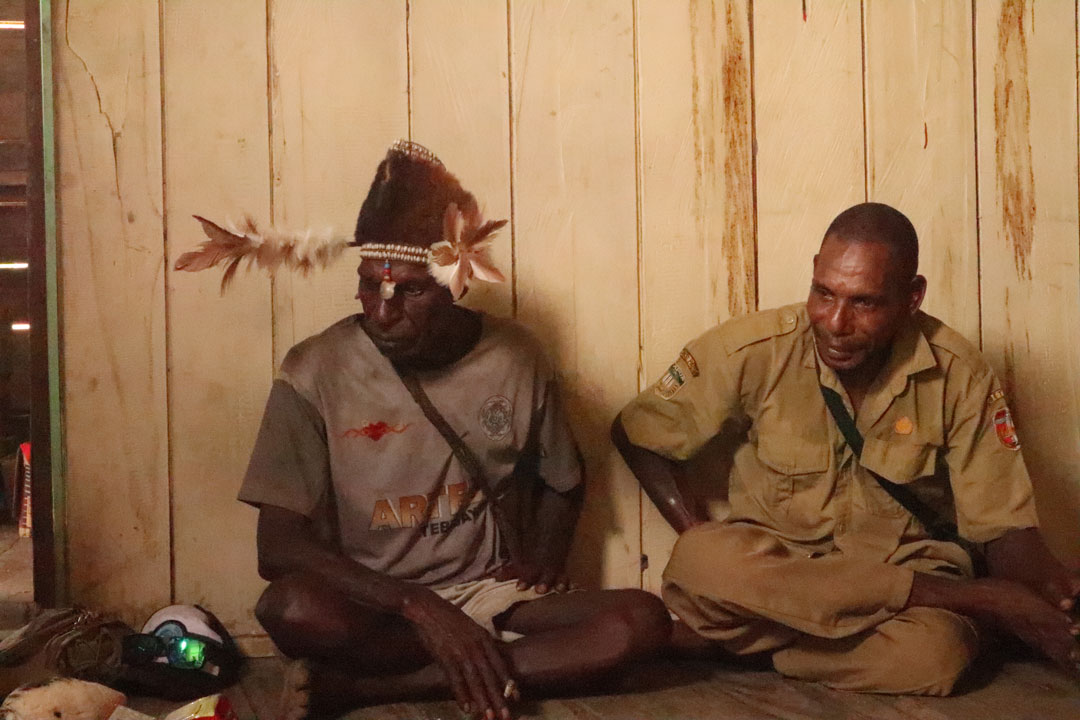
A customary leader and a village officer provide information about sawfish. Photo © Sawfish Indonesia
Atsj was one of the ten districts we visited. As usual, we interviewed indigenous people to find out about sawfish. As a result, almost everyone there says that Ar is the embodiment of their ancestors. Unfortunately, ordinary people cannot provide further information. We were advised to ask the traditional leaders because they are the ones who have the right to tell the story.
1. Sawfish is the ancestor
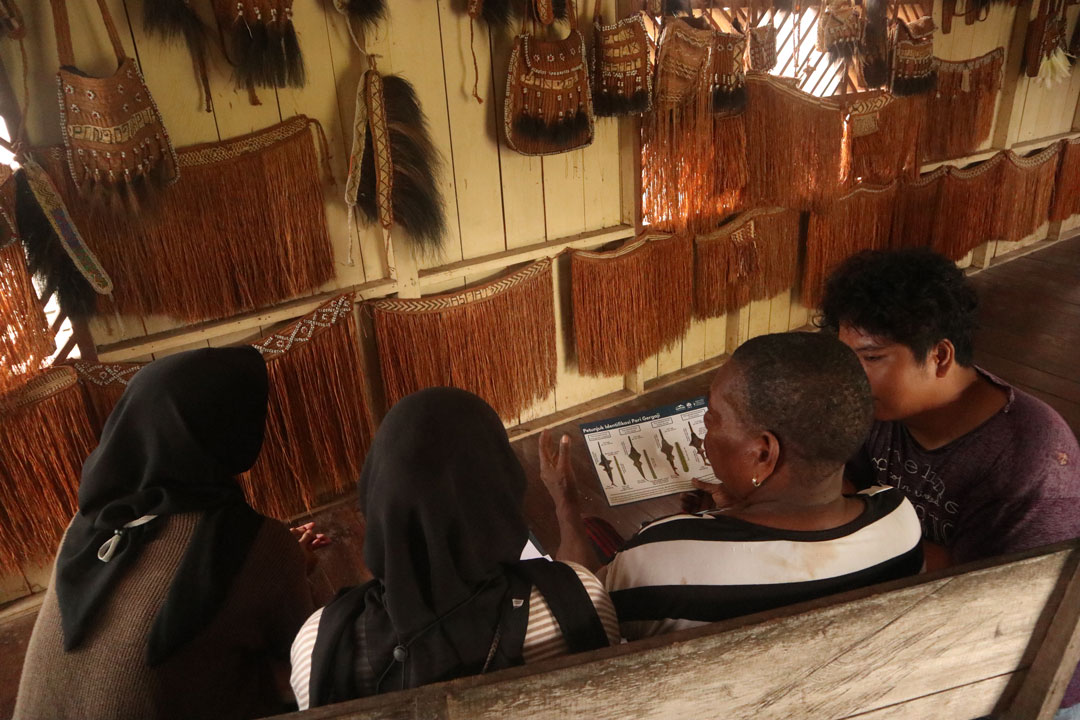
Mama Monica explained the origin of Ar. Photo © Sawfish Indonesia
At first, we met Mama Monica, head of the Noken art studio. From her, we got the origin story of the sawfish in Asmat. Once upon a time, there was a woman named Cauwut Buwar. She was pregnant and gave birth to a sawfish named Ar. Because the baby was a fish, he was released into the water and lived in a river called Onai, another name we predict for the Bets River.
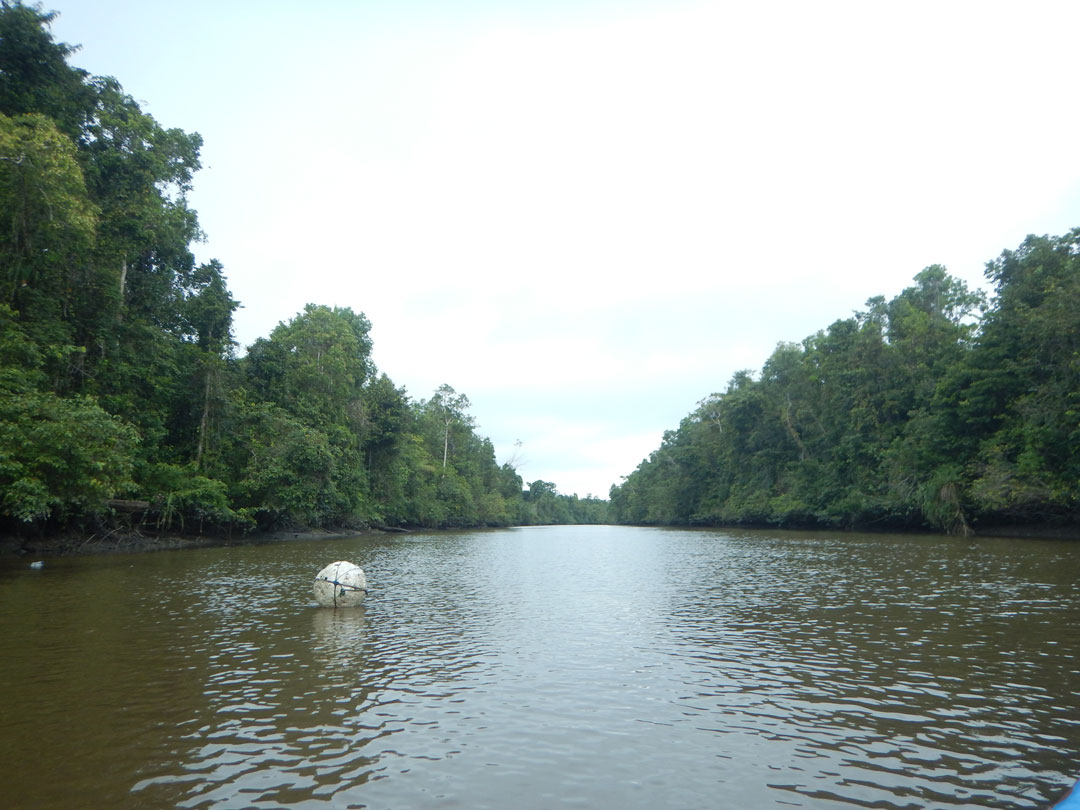
Asmat river. Photo © Sawfish Indonesia
The sawfish is considered sacred by the community and believed as the guardian of the river. Therefore, everyone crossing the river must give “derma” offerings such as money or cigarettes. Giving derma is intended to ask for safety and guidance. The head of the carving studio, Mr. Yohanes, stated the same thing. He added that the sawfish would come if there were traditional ceremonies such as the traditional house (Jew) construction and the sago caterpillar ceremony to give blessings and strength to everyone who celebrated it.
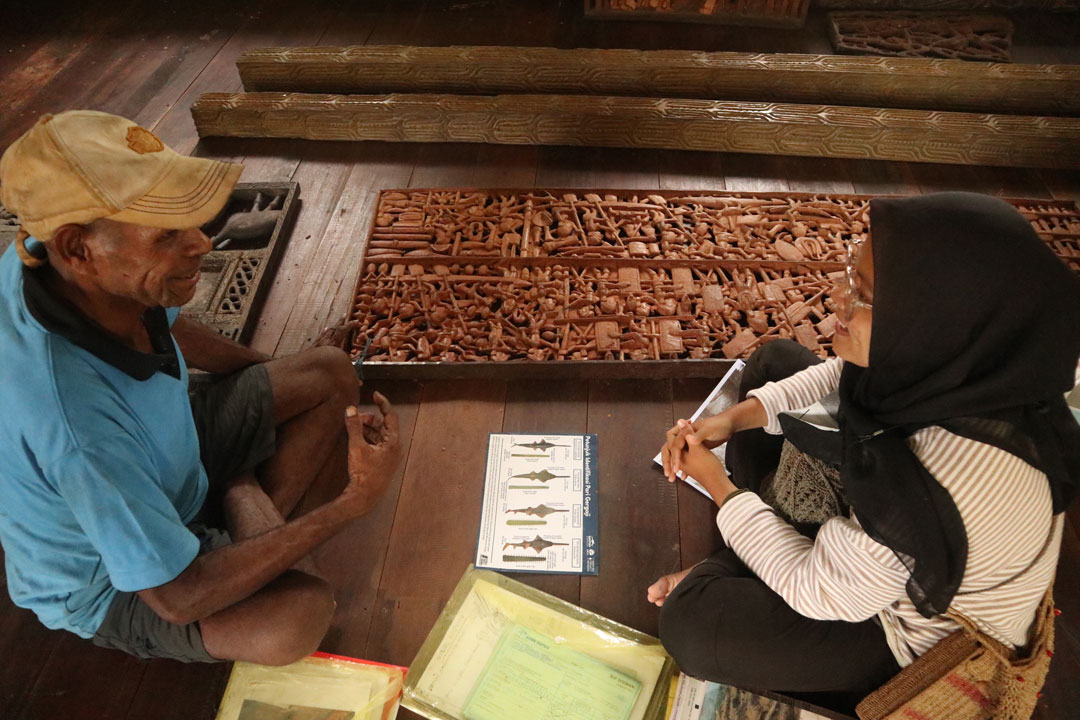
Mr. Yohanes explained about the sawfish as their ancestor. Photo © Sawfish Indonesia
Due to the solid sacred value of the sawfish, several river locations are forbidden for fishing or even passing by. According to the story, this is meant to avoid this fish being entangled in nets, which will anger the ancestors and curse the community. Anyone who dares to disobey it will get a disaster on their way.
2. The story of the sawfish carving from Santambor

Photo © Sawfish Indonesia
Moving on to Santambor, a coastal village in the Safan district, we met Mr. Alex Sakan. He is a sculptor who made carvings of sawfish which are now kept in the Asmat Museum of Culture and Progress.

Photo © Sawfish Indonesia
If we look at the shape of the carving, we can see the embodiment of two ancestors riding a dragon-headed boat.
Based on Mr. Alex’s narrative, there were no seas and rivers in ancient times. However, when this boat passes, its traversing land will turn into oceans and rivers. In addition, the seawater’s salty cause is that the sawfish-headed ancestor (in the back of the boat) urinated on the sea.
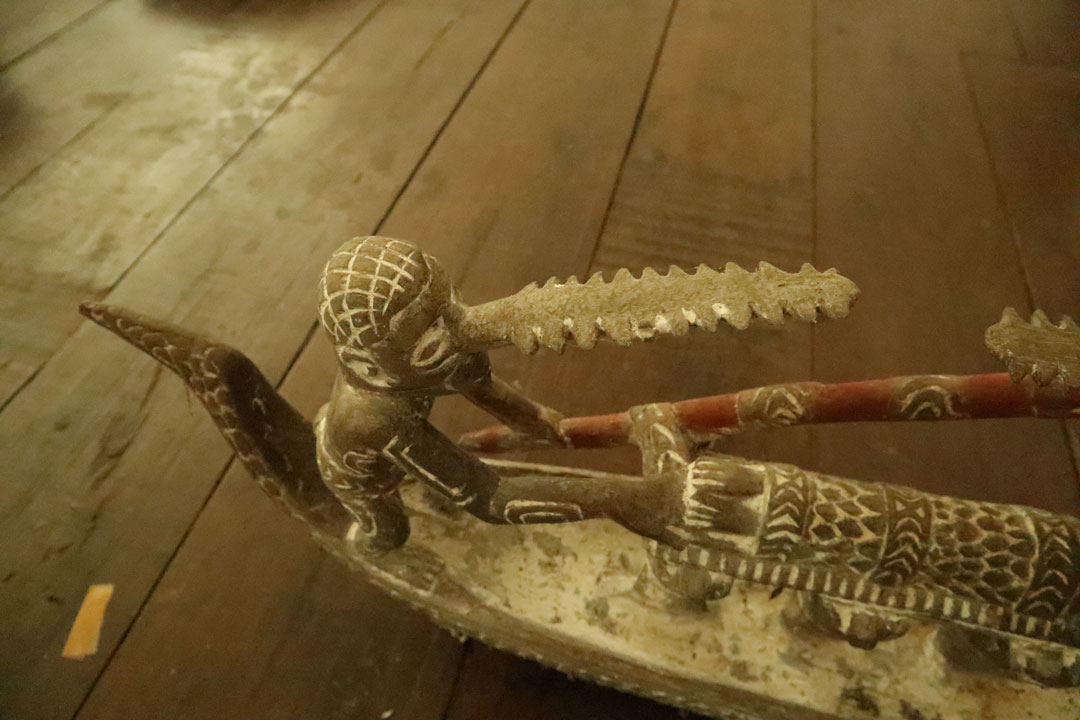
Photo © Sawfish Indonesia
The exciting story of sawfish has opened our eyes to their role in Asmat society. For some people, the story may be a metaphor. However, looking at the community’s perspective regarding this fish and how they react to it will undoubtedly make it easier for us and other researchers to determine practical efforts that are in line with the community’s traditional values so that it will have an impact on the success of the conservation project itself.
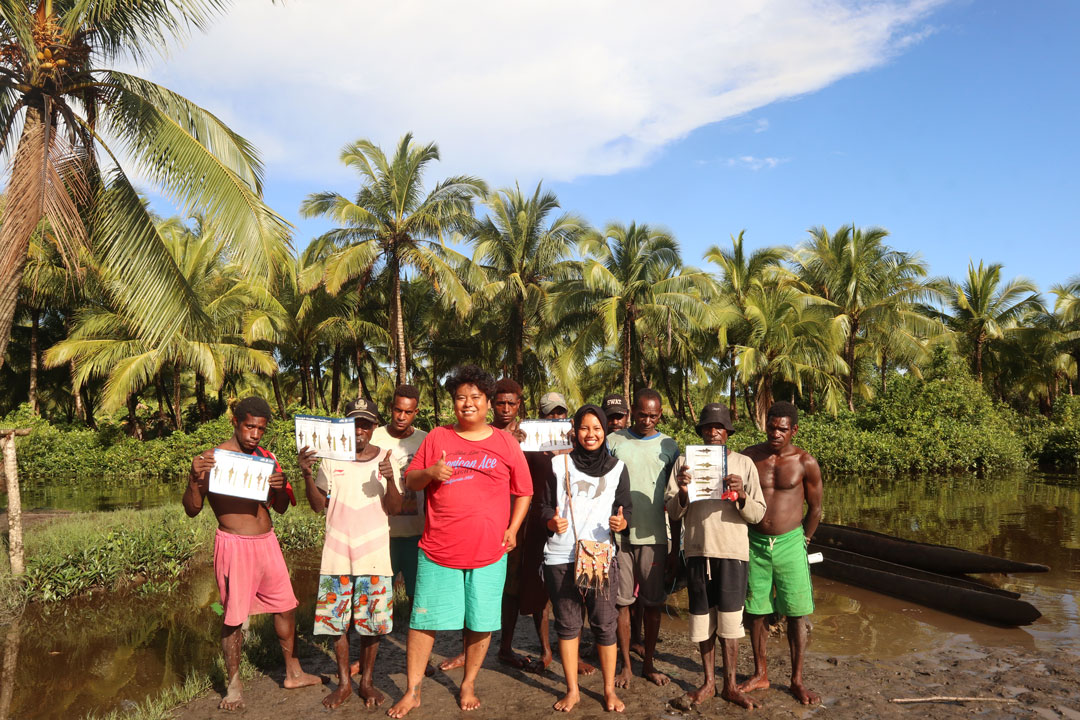
Photo © Sawfish Indonesia
In closing, I would like to quote Mr Yohanes’s words ‘If we protect sawfish, then sawfish will protect us.’
